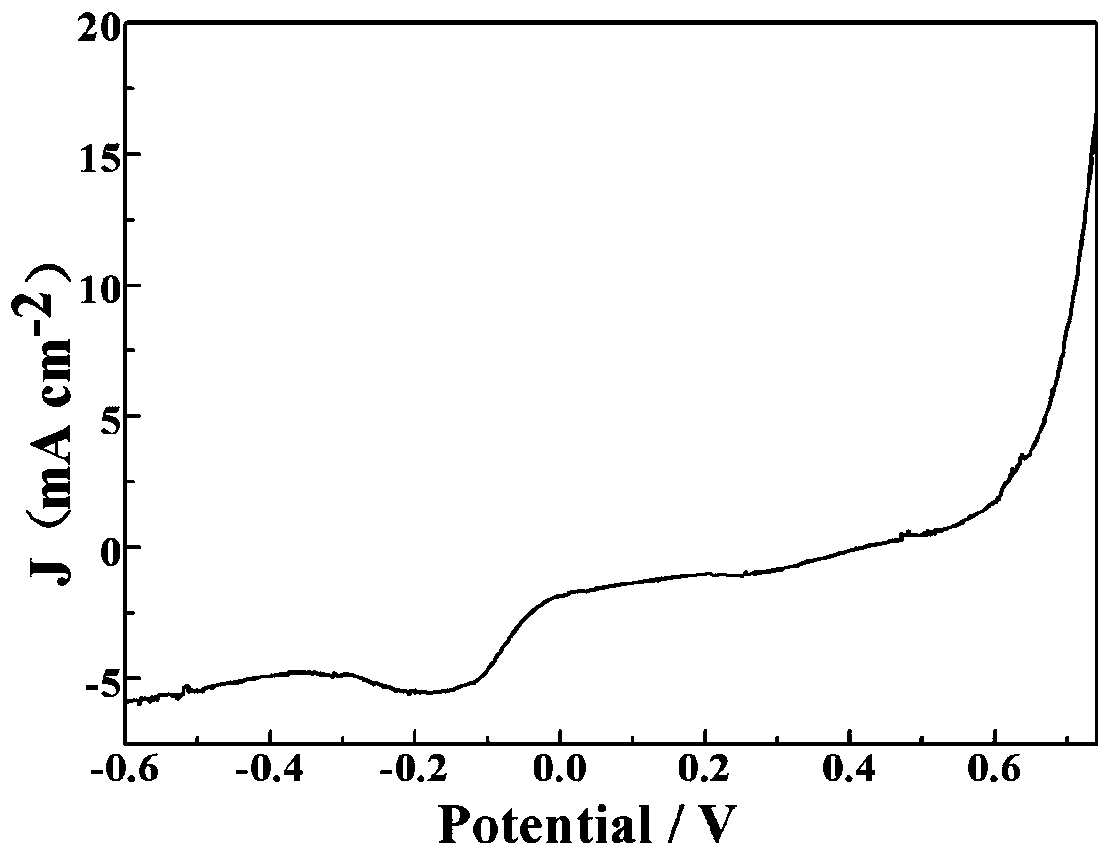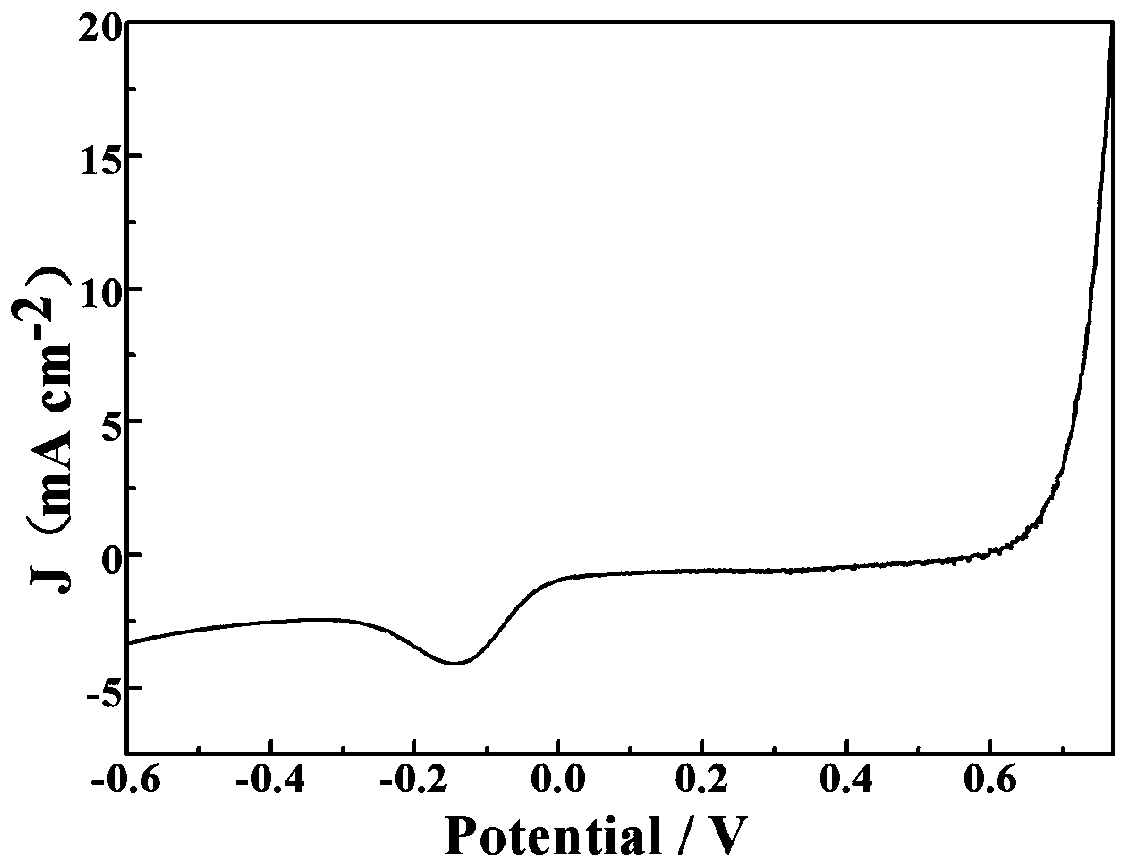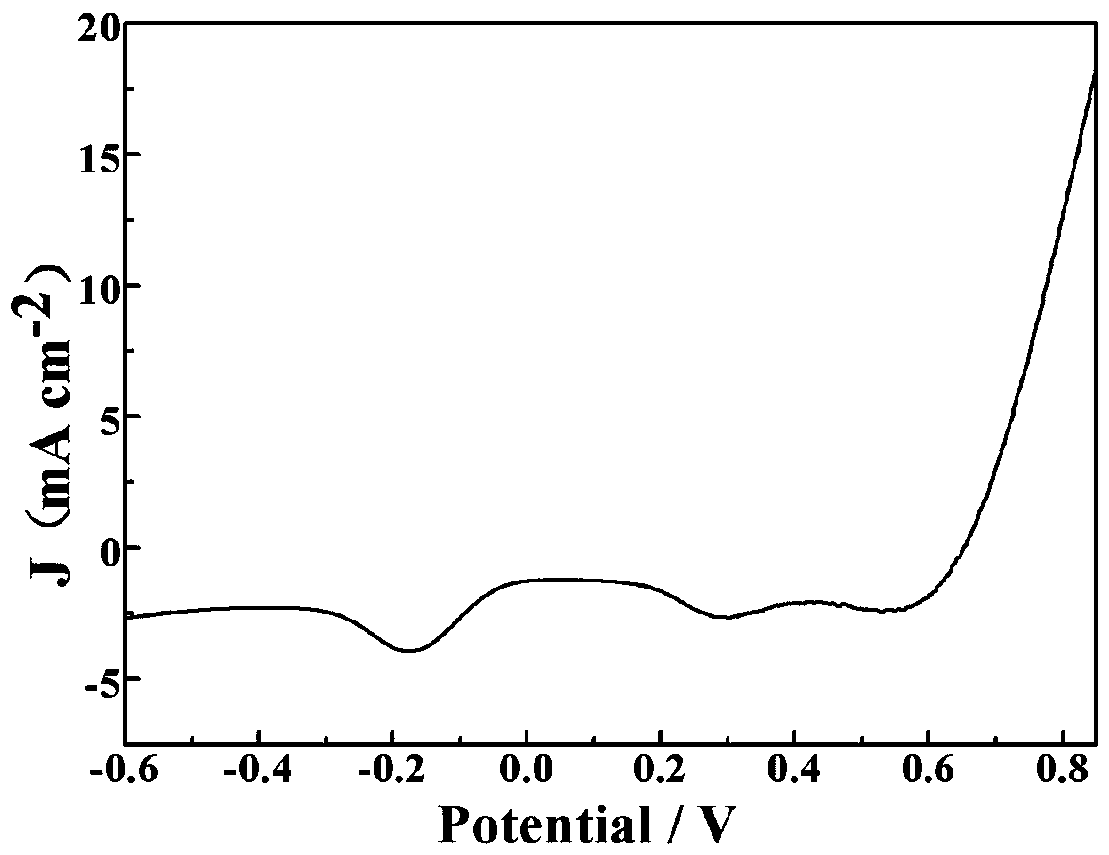Method for preparing bifunctional cobalt, nitrogen and oxygen doped carbon in-situ composite electrode
An in-situ composite and in-situ electrode technology, which is applied to battery electrodes, circuits, electrical components, etc., can solve the problems of high price and promotion
- Summary
- Abstract
- Description
- Claims
- Application Information
AI Technical Summary
Problems solved by technology
Method used
Image
Examples
Embodiment 1
[0025] At room temperature, carbon paper was electrodeposited in an aqueous solution of cobalt nitrate hexahydrate, in which the concentration of cobalt nitrate hexahydrate was 150 mM, the voltage was -1.0 V, and the time was 90 s. Afterwards, rinse repeatedly with deionized water and dry at 80°C for 10 minutes on a hot stage. Put the deposited carbon paper into a tube furnace, react at 400°C for 30 minutes under Air flow, and take it out after naturally cooling to room temperature to obtain the carbon paper grown on the carbon paper. In situ electrodes of cobalt oxide arrays in the form of porous sheets. Dissolve Tx-100 and dicyandiamide in 2.0mL N,N-dimethylformamide solution to obtain a precursor solution, wherein the amount of Tx-100 is 1.0mL, and the concentration of dicyandiamide is 2000mM. Soak the porous cobalt oxide array in-situ electrode grown on carbon paper in the precursor solution for 30 minutes, take it out, dry it on a hot table at 80°C for 10 minutes, then ev...
Embodiment 2
[0028] At room temperature, the carbon paper was electrodeposited in an aqueous solution of cobalt nitrate hexahydrate, in which the concentration of cobalt nitrate hexahydrate was 150 mM, the voltage was -1.0 V, and the time was 180 s. Afterwards, rinse repeatedly with deionized water and dry at 80°C for 10 minutes on a hot stage. Put the deposited carbon paper into a tube furnace, react at 400°C for 30 minutes under Air flow, and take it out after naturally cooling to room temperature to obtain the carbon paper grown on the carbon paper. In situ electrodes of cobalt oxide arrays in the form of porous sheets. Dissolve Tx-100 and dicyandiamide in 2.0 mL of N,N-dimethylformamide solution to obtain a precursor solution, wherein the amount of Tx-100 is 1.0 mL, and the concentration of dicyandiamide is 2000 mM. Soak the porous cobalt oxide array in-situ electrode grown on carbon paper in the precursor solution for 30 minutes, take it out, dry it on a hot table at 80°C for 10 minut...
Embodiment 3
[0034] At room temperature, the carbon paper was electrodeposited in an aqueous solution of cobalt nitrate hexahydrate, in which the concentration of cobalt nitrate hexahydrate was 150 mM, the voltage was -1.0 V, and the time was 270 s. Afterwards, rinse repeatedly with deionized water and dry at 80°C for 10 minutes on a hot stage. Put the deposited carbon paper into a tube furnace, react at 400°C for 30 minutes under Air flow, and take it out after naturally cooling to room temperature to obtain the carbon paper grown on the carbon paper. In situ electrodes of cobalt oxide arrays in the form of porous sheets. Dissolve Tx-100 and dicyandiamide in 2.0 mL of N,N-dimethylformamide solution to obtain a precursor solution, wherein the amount of Tx-100 is 1.0 mL, and the concentration of dicyandiamide is 2000 mM. Soak the porous cobalt oxide array in-situ electrode grown on carbon paper in the precursor solution for 30 minutes, take it out, dry it on a hot table at 80°C for 10 minut...
PUM
 Login to View More
Login to View More Abstract
Description
Claims
Application Information
 Login to View More
Login to View More - R&D
- Intellectual Property
- Life Sciences
- Materials
- Tech Scout
- Unparalleled Data Quality
- Higher Quality Content
- 60% Fewer Hallucinations
Browse by: Latest US Patents, China's latest patents, Technical Efficacy Thesaurus, Application Domain, Technology Topic, Popular Technical Reports.
© 2025 PatSnap. All rights reserved.Legal|Privacy policy|Modern Slavery Act Transparency Statement|Sitemap|About US| Contact US: help@patsnap.com



